Abstract
An assay of phagocytic killing by murine neutrophils in homologous serum was used to determine the nature of the opsonins in normal mouse serum for phagocytic killing of Proteus mirabilis. Leucocytes from the peritoneal cavities of mice given an intraperitoneal inoculation of brain-heart infusion broth 3 h previously, phagocytosed and killed P. mirabilis in a 2-h assay in the presence of 10% serum from normal mice. The serum factors supporting phagocytic killing were heat-labile (50 degrees C or 56 degrees C for 30 min) and could be absorbed at 37 degrees C but not 4 degrees C by three different species of Gram-negative bacteria. The tested species of Gram-positive bacterium did not absorb the activity. At the end of the assays, greater than 90% of leucocyte-associated bacteria were associated with neutrophils. Leucocytes from unstimulated peritoneal cavities (less than I% neutrophils) did not kill bacteria in this assay, in contrast to leucocyte suspensions containing up to 98% neutrophils. These findings indicated that the phagocytic killing of P. mirabilis in this assay was mediated by neutrophils, and that complement fixation by the alternative pathway provided necessary opsonins in normal mouse serum.
Full text
PDF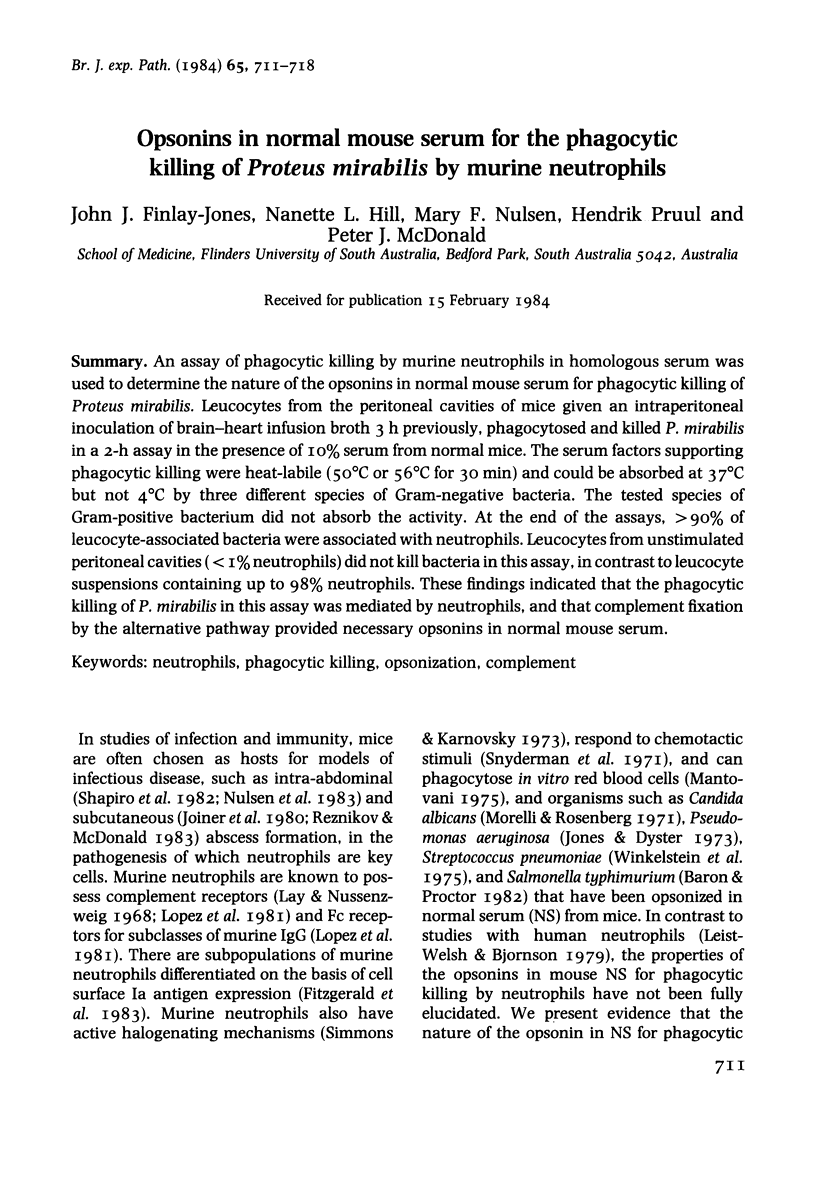
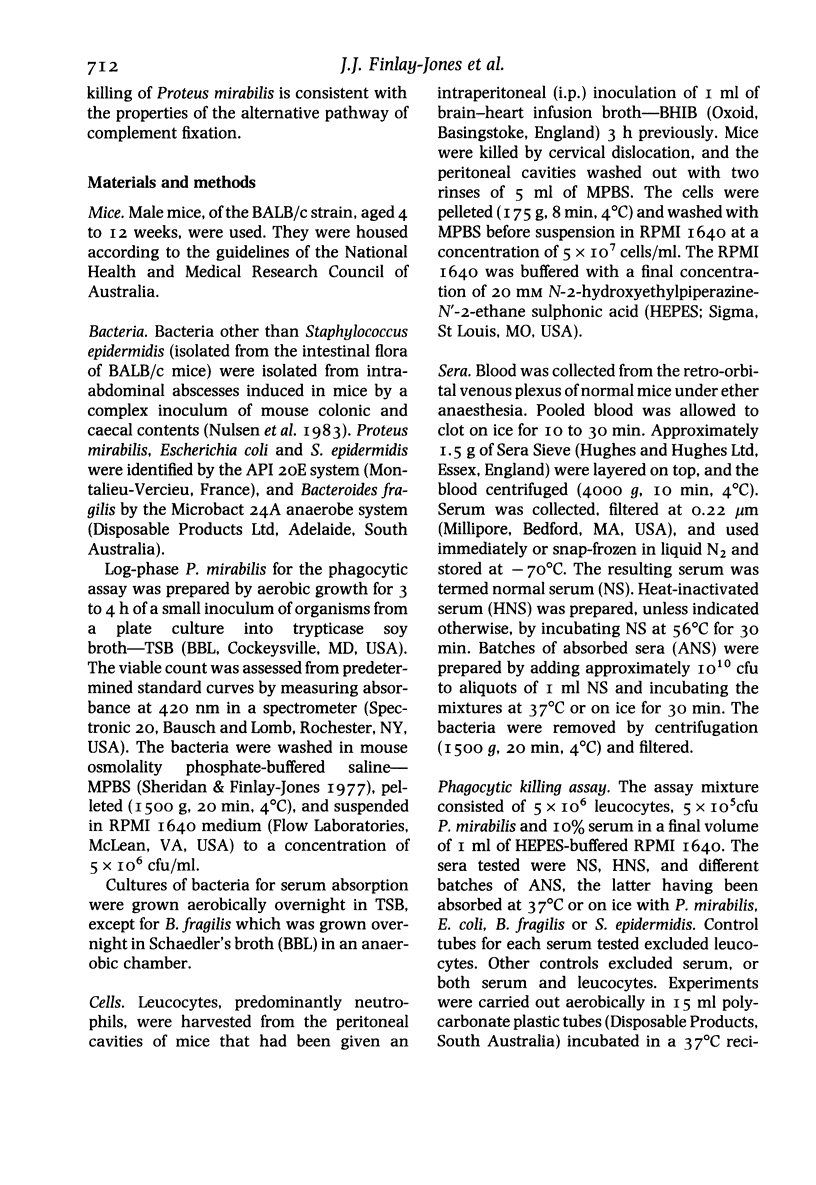
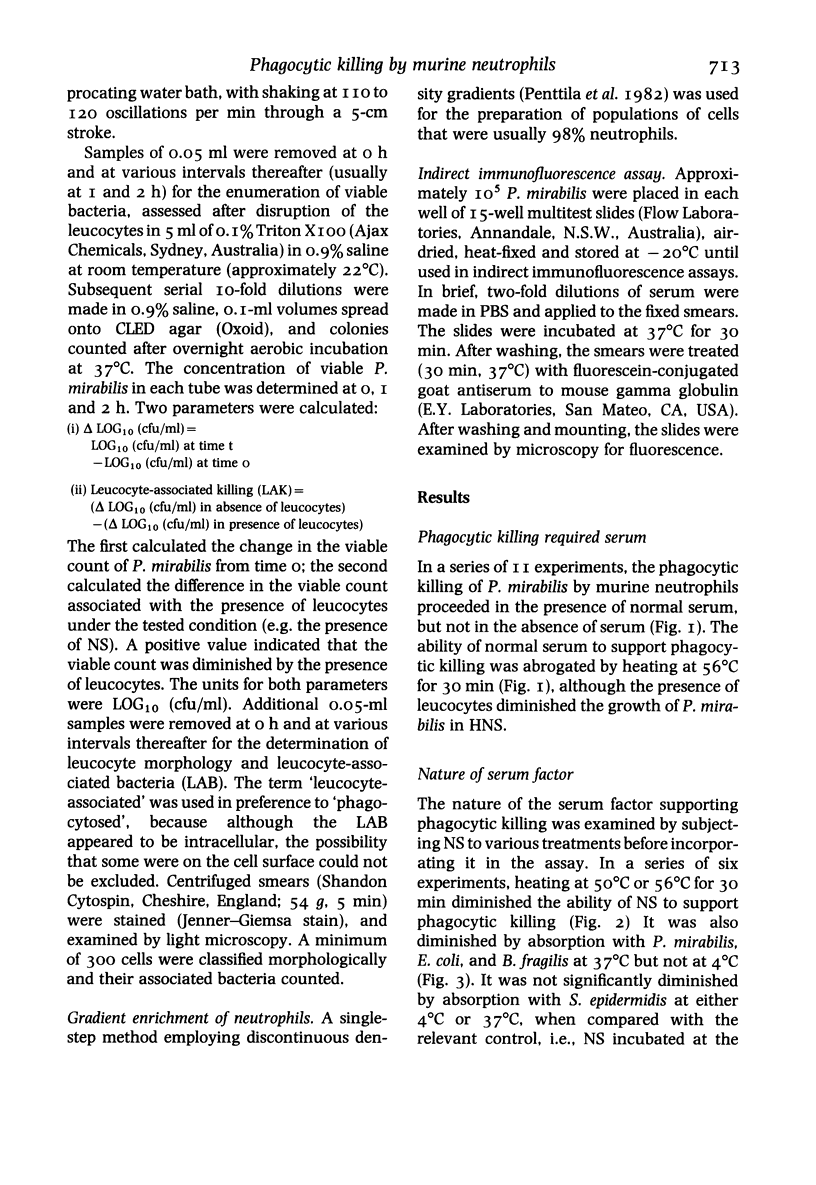
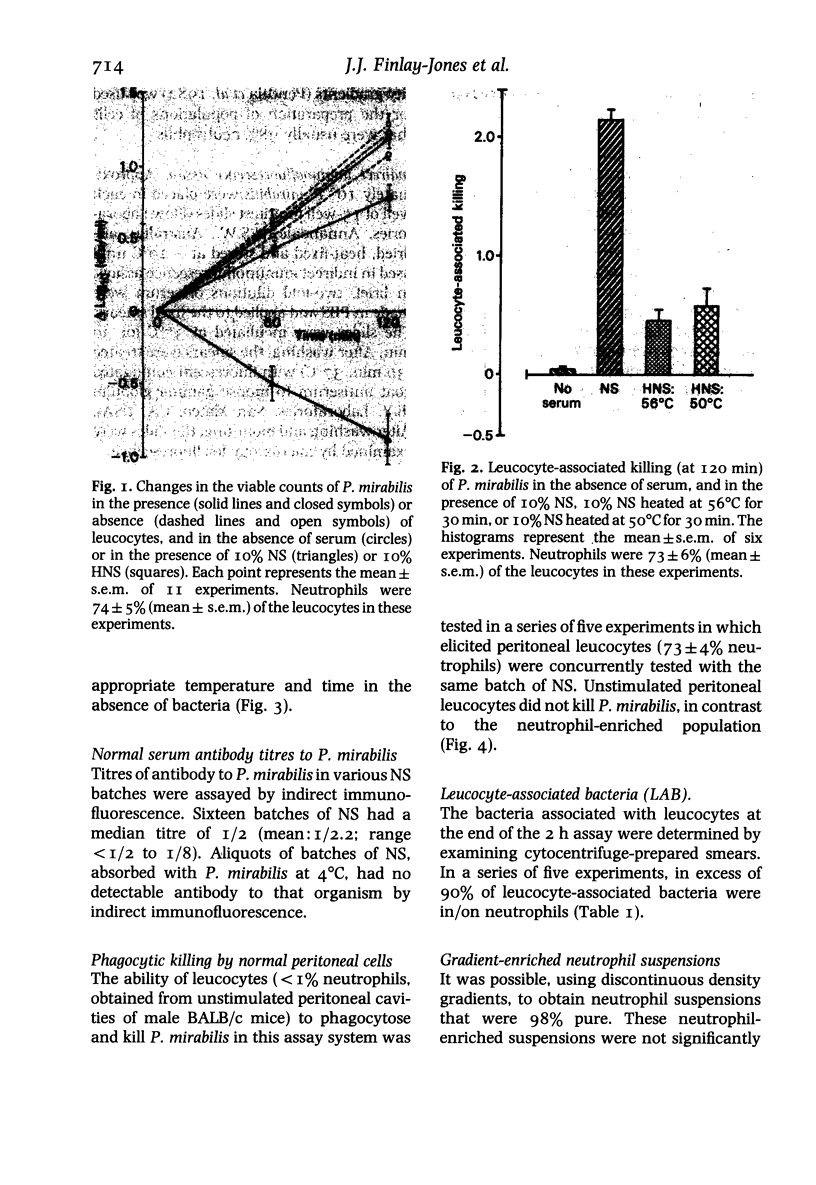
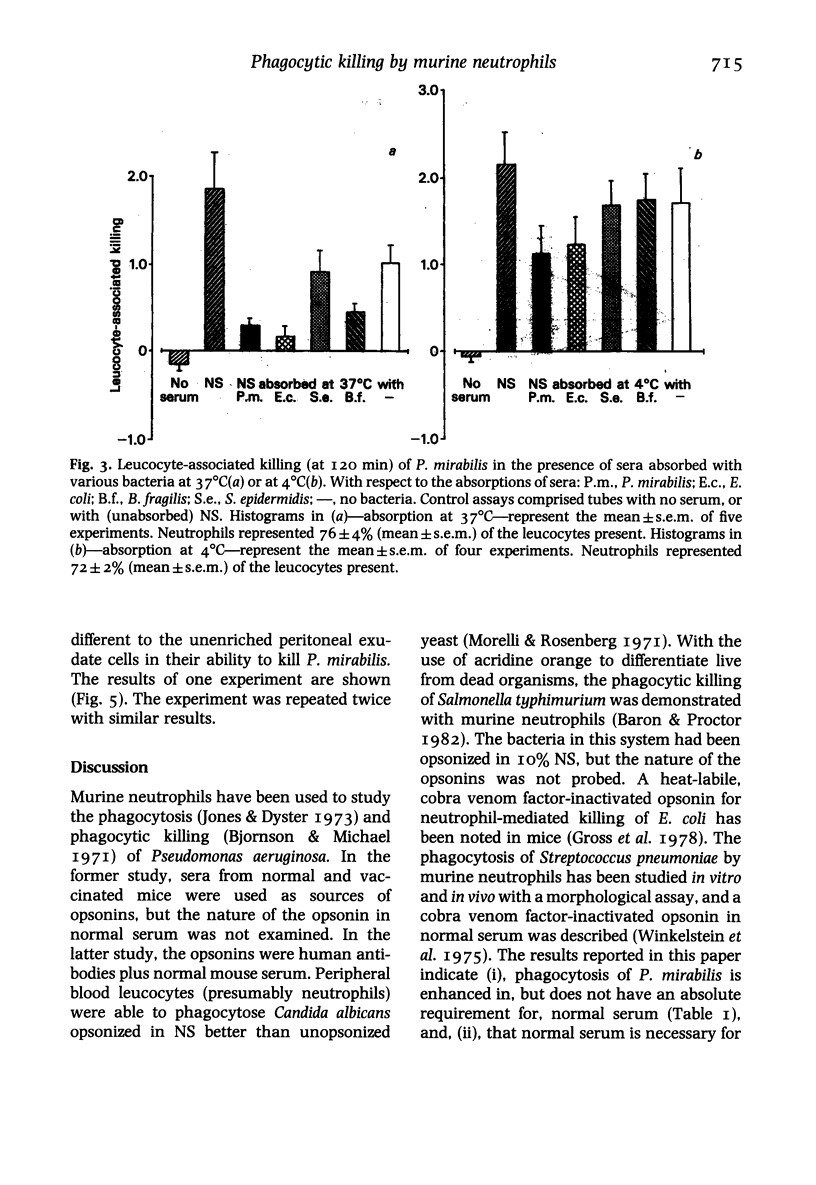
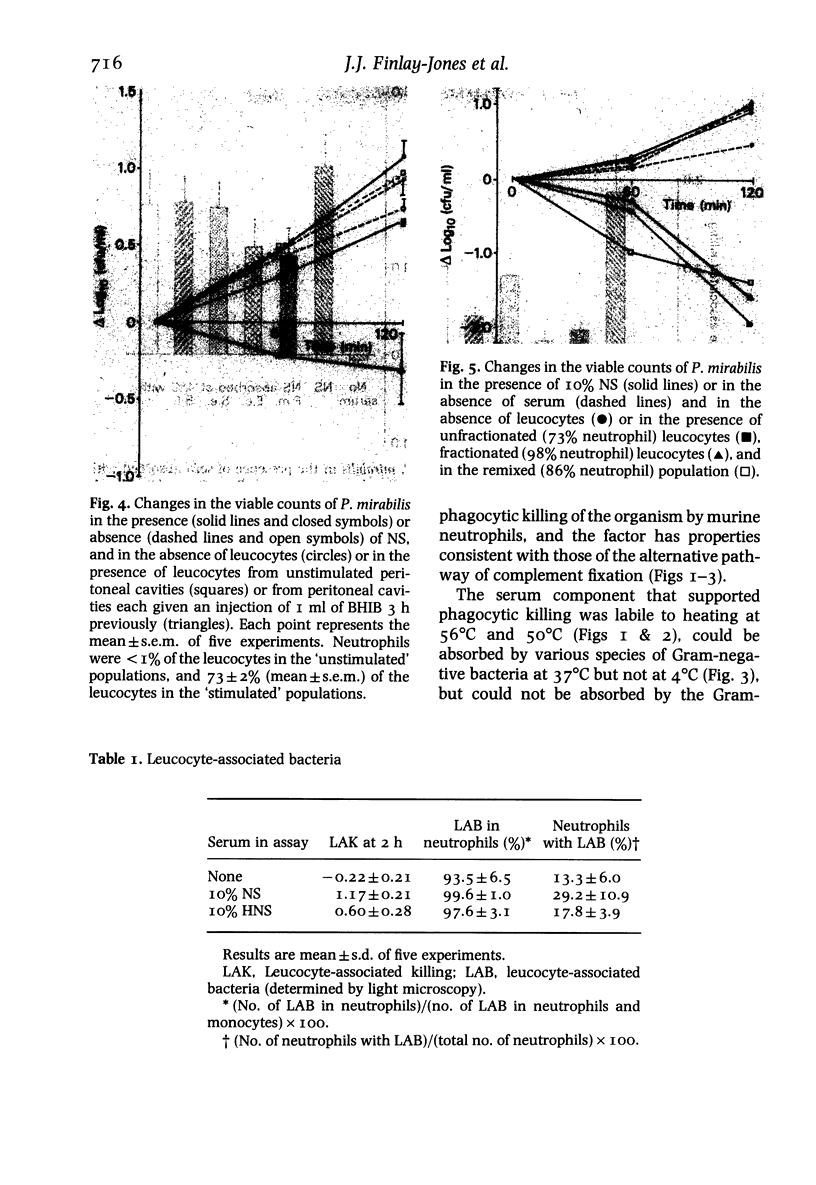
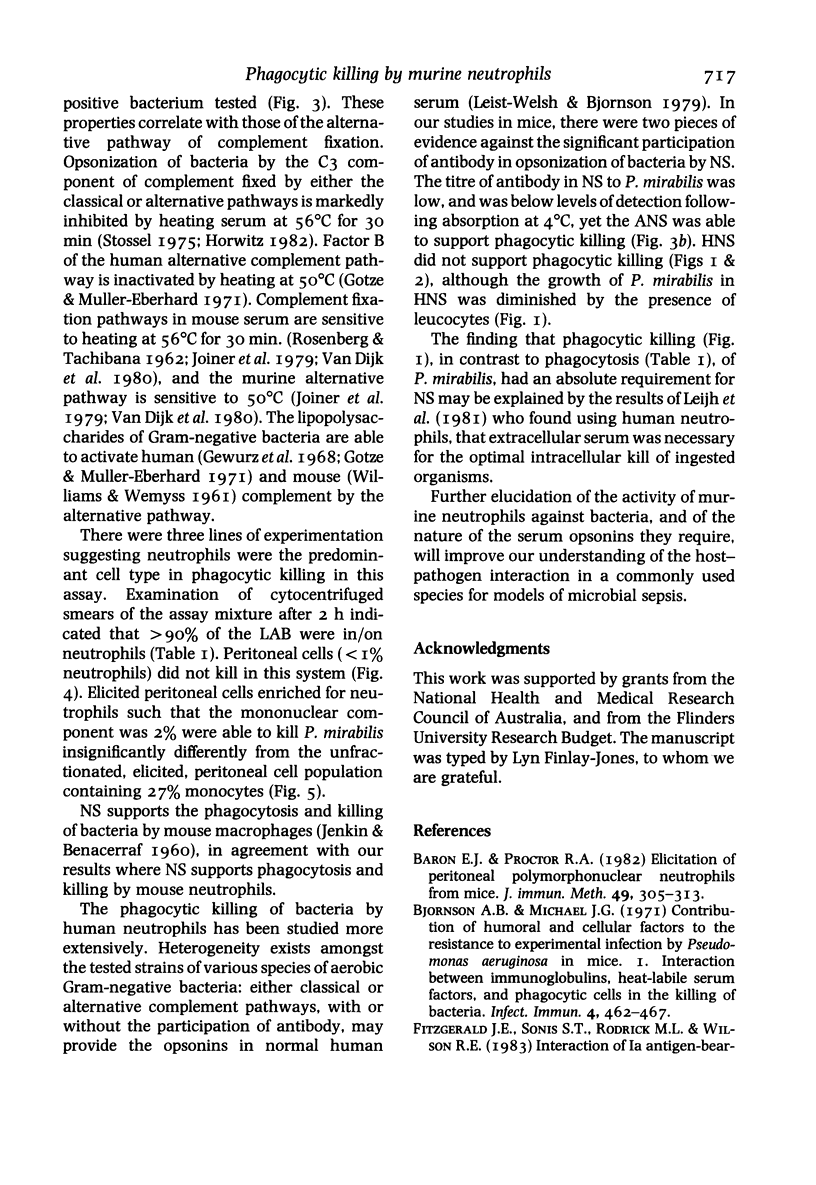

Selected References
These references are in PubMed. This may not be the complete list of references from this article.
- Baron E. J., Proctor R. A. Elicitation of peritoneal polymorphonuclear neutrophils from mice. J Immunol Methods. 1982 Mar 26;49(3):305–313. doi: 10.1016/0022-1759(82)90130-2. [DOI] [PubMed] [Google Scholar]
- Bjornson A. B., Michael J. G. Contribution of humoral and cellular factors to the resistance to experimental infection by Pseudomonas aeruginosa in mice. I. Interaction between immunoglobulins, heat-labile serum factors, and phagocytic cells in the killing of bacteria. Infect Immun. 1971 Oct;4(4):462–467. doi: 10.1128/iai.4.4.462-467.1971. [DOI] [PMC free article] [PubMed] [Google Scholar]
- Fitzgerald J. E., Sonis S. T., Rodrick M. L., Wilson R. E. Interaction of Ia antigen-bearing polymorphonuclear leukocytes and murine splenocytes. Inflammation. 1983 Mar;7(1):25–33. doi: 10.1007/BF00918005. [DOI] [PubMed] [Google Scholar]
- Gross G. N., Rehm S. R., Pierce A. K. The effect of complement depletion on lung clearance of bacteria. J Clin Invest. 1978 Aug;62(2):373–378. doi: 10.1172/JCI109138. [DOI] [PMC free article] [PubMed] [Google Scholar]
- Horwitz M. A. Phagocytosis of microorganisms. Rev Infect Dis. 1982 Jan-Feb;4(1):104–123. doi: 10.1093/clinids/4.1.104. [DOI] [PubMed] [Google Scholar]
- Lay W. H., Nussenzweig V. Receptors for complement of leukocytes. J Exp Med. 1968 Nov 1;128(5):991–1009. doi: 10.1084/jem.128.5.991. [DOI] [PMC free article] [PubMed] [Google Scholar]
- Leijh P. C., van den Barselaar M. T., Daha M. R., van Furth R. Participation of immunoglobulins and complement components in the intracellular killing of Staphylococcus aureus and Escherichia coli by human granulocytes. Infect Immun. 1981 Sep;33(3):714–724. doi: 10.1128/iai.33.3.714-724.1981. [DOI] [PMC free article] [PubMed] [Google Scholar]
- Leist-Welsh P., Bjornson A. B. Requirements of immunoglobulin and the classical and alternative complement pathways for phagocytosis and intracellular killing of multiple strains of Gram-negative aerobic bacilli. Infect Immun. 1979 Oct;26(1):99–109. doi: 10.1128/iai.26.1.99-109.1979. [DOI] [PMC free article] [PubMed] [Google Scholar]
- López A. F., Strath M., Sanderson C. J. IgG and complement receptors on purified mouse eosinophils and neutrophils. Immunology. 1981 Aug;43(4):779–786. [PMC free article] [PubMed] [Google Scholar]
- Morelli R., Rosenberg L. T. The role of complement in the phagocytosis of Candida albicans by mouse peripheral blood leukocytes. J Immunol. 1971 Aug;107(2):476–480. [PubMed] [Google Scholar]
- Penttila I. A., O'Keefe D. E., Jenkin C. R. A single-step method for the enrichment of murine peripheral blood eosinophils. J Immunol Methods. 1982;51(1):119–123. doi: 10.1016/0022-1759(82)90388-x. [DOI] [PubMed] [Google Scholar]
- Reznikov M., McDonald P. J. Effect of metronidazole on Escherichia coli in the presence of Bacteroides fragilis: an investigation in mice. Chemotherapy. 1983;29(3):225–229. doi: 10.1159/000238201. [DOI] [PubMed] [Google Scholar]
- Simmons S. R., Karnovsky M. L. Iodinating ability of various leukocytes and their bactericidal activity. J Exp Med. 1973 Jul 1;138(1):44–63. doi: 10.1084/jem.138.1.44. [DOI] [PMC free article] [PubMed] [Google Scholar]
- Snyderman R., Phillips J. K., Mergenhagen S. E. Biological activity of complement in vivo. Role of C5 in the accumulation of polymorphonuclear leukocytes in inflammatory exudates. J Exp Med. 1971 Nov 1;134(5):1131–1143. doi: 10.1084/jem.134.5.1131. [DOI] [PMC free article] [PubMed] [Google Scholar]
- Van Dijk H., Rademaker P. M., Willers J. M. Determination of alternative pathway of complement activity in mouse serum using rabbit erythrocytes. J Immunol Methods. 1980;36(1):29–39. doi: 10.1016/0022-1759(80)90091-5. [DOI] [PubMed] [Google Scholar]


